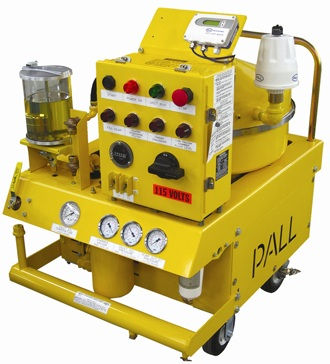HYDRAULIC SYSTEM HEALTH & WELL BEING
- Robert Peterson Sunset Aviation Services
- Feb 21, 2018
- 4 min read
With the military releasing aircraft to civilian operators, many civilian operators are following the maintenance schedule the military has set up. The issue with this is that the military doesn’t fly the hours or perform the same work as civilian operators. The repetitive lifting, loading and unloading done in civilian jobs means the rotor head will increase the wear in the hydraulic flight control system.
This is a critical issue, for example; in the civilian Chinook (BV-234) the Pivoting and Swiveling Actuators have a 1,000-hour seal change and 2,000-hour overhaul schedule. The actuators are the same as the CH-47D. The lower Boost Actuators are at 1,200-hours with a 2,400-overhaul schedule, but different than the CH-47D’s.
The hydraulic pump are overhauled atl 2,000-hours. The rest of the hydraulic system is on condition. The BV-107 Upper Boost Actuators have 2,000-hour overhaul schedule and the Stick Boost Actuators are on condition, with the hydraulic Pump being overhaul at 4,000-hours.
The H-46 has utility system also. As an operator you will find the weak spots in your hydraulic flight control system. The more hours you put on the aircraft the more critical the hydraulic system becomes. Always keep the hydraulic fluid at Class 3 or 4 as this will also reduce overhaul costs greatly and increase the reliability of your hydraulic system.
Let’s talk about the cleanliness of your hydraulic system. With any hydraulic system it must be clean at all times, for all helicopters it should be Class 5 or better. To maintain this system check your hydraulic fluid by sending out to lab and have particle count, these are what you need Carl Fisher count (water saturate count) and a wear metal count. The wear metal will tell you what is starting to wear in your system.

To keep the Hydraulic system running well, purify at phase inspection or if your filters have a lot metal in the bowl. Just remember when you purify your hydraulic system the portable fluid purifier will do the following:
1. Environmental cost of disposing the waste fluid can incur a cost savings to you, the customer, with less new fluid purchased.
2. Improved system performance.
3. Reduced system maintenance, extended service life of oil and components. It also removes water up to 80%, gases, solvents and particulate from oil at 3 microns. This is a good idea especially if you are flying lots of hours on your Helicopter.
You also need a way to check the temperature in your system, I suggest using ETEKCITY LASERGRIP 1080 Infrared thermometer.
Measure the temperature difference between the inlet and outlet side of your component. This will tell if the component is starting go bad internally. Usually a 15 F degree spread is normal, anything above that is not.
Here are a few tips on maintaining your hydraulic system;
1. Make sure all the hydraulic lines are tightened especially the return lines and suction line going from reservoir to the pump. Loose return lines will cause air to enter into system which can cause all kind problems.
2. When tightening MS lines, it is importation to not over tighten. If you do over tighten, it will leak. The correct way to tighten a MS line is run the “B” on the fitting until you get a sharp rise in torque and then go one flat on the “B” nut.
3. Make sure there isn’t internal leaks in your system. This can be done by checking the inlet and out let temperature your components in the system. If there is a 15 degree spread, the component is leaking internally. This can be checked by using infrared thermometer. If you don’t have one just put you hand on the component but, be careful it will be hot!!
4. Make sure the there is an enough fluid in the system and the right fluid called out the manual for the aircraft. If you have the wrong fluid it will affect the seals causing leaks and improper function of the components.
5. Remember that all the rubber parts such as the O-rings in components have a 15-year life and goes the for the rubber hoses, too. Now the exception to this rule Viton O-rings and wire braided Teflon hose, there is no cure date for either.
In the end the operators will be the ones to establish their maintenance schedule for the hydraulic flight control system, but this is a good example to start with.
About Bob Peterson
Bob entered the aviation field when he was drafted in 1963, despite being in college working towards a degree in mechanical engineering. He joined the U.S Air Force and went to technical school on hydraulics and spent five years working on hydraulic systems on a virtual air show of aircraft. The F-4, F-105, F-106, F-102, B-52, KC-135, C-130, C-54, C-47, H-19 and the H-43 among others. If a new air aircraft came in, Bob volunteered to work on it.
After leaving the military, Bob went back to college to get his A&P certification and arrived at Columbia Helicopters in 1972. In 18 months, he became the hydraulic shop chief and held that position for 30 plus years. Bob was a member of the Air National Guard for 31 years and is a member of the Standards of American Engineering (Aerospace Actuation, Control and fluid Power Systems) A-6. Bob is currently consulting at Sunset Aviation Services Inc. An aviation hydraulic shop in Aurora, Oregon.





































Comments